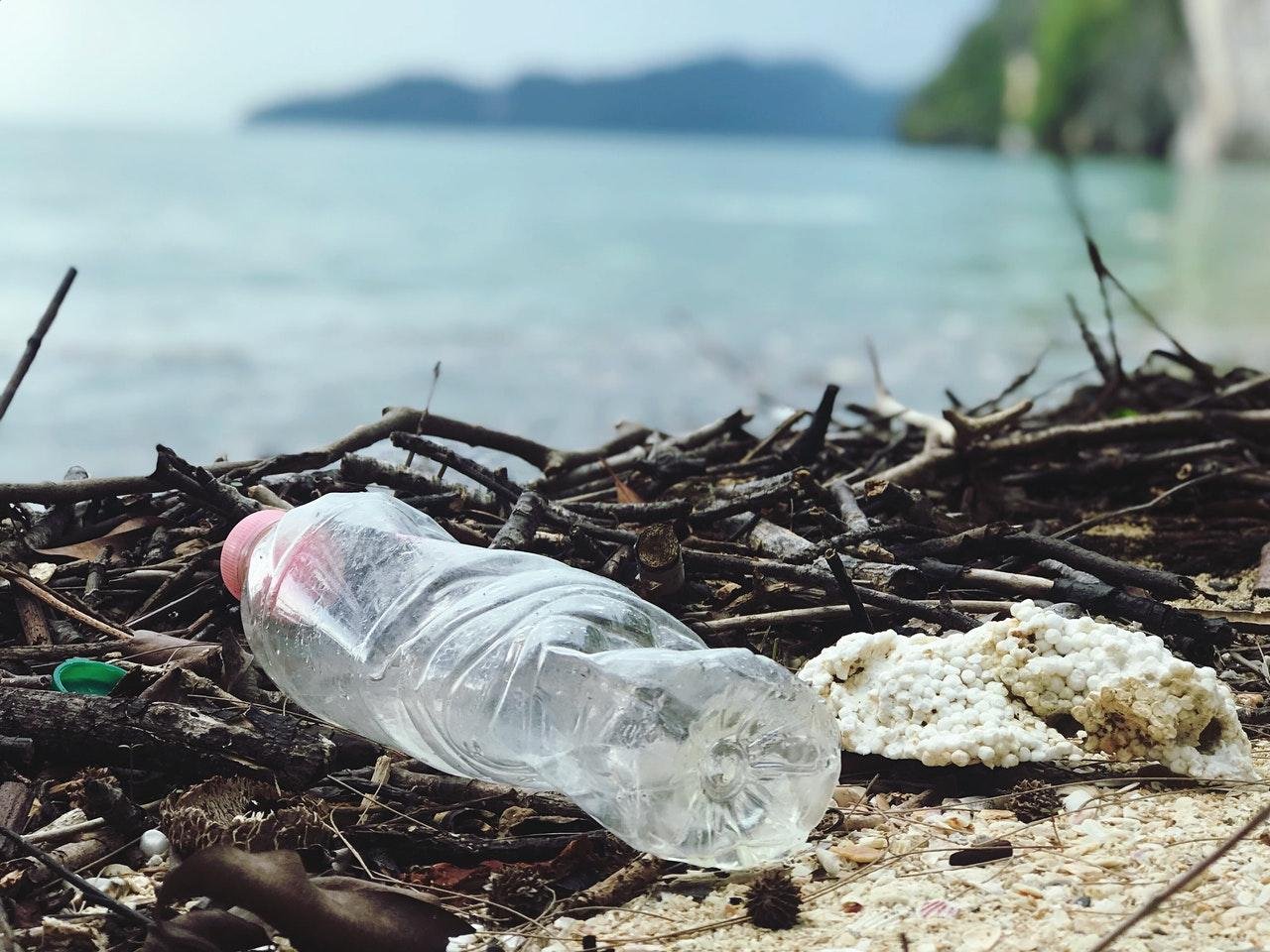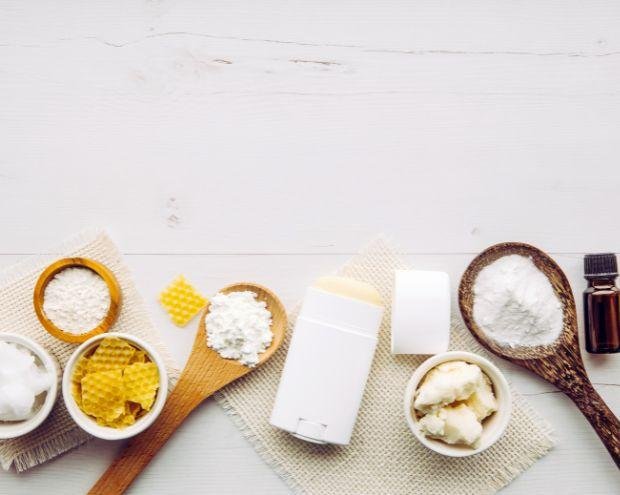Biodegradable Plastic: A False Solution to Plastic Pollution?
Just a heads up, this post contains some affiliate links. That means that we earn a small commission if you buy the product at no extra cost to you. That allows us to continue to research and share interesting articles with you. :)

Plastic. It seems to be everywhere in our world. A recent study by The University of Newcastle, Australia, suggests that humans potentially ingest every week “up to 5 g/week of microplastic particles.”. That’s the same weight as a 20-pence piece in the UK or an American nickel.
Biodegradable plastics, or bioplastics, might be the answer to this problem. Both biodegradable plastics and eco-plastics come with their problem, namely, whether or not they biodegrade at a helpful rate.
All things biodegrade, and biodegradable plastic does biodegrade, but in some cases, it may take hundreds, if not thousands, of years to biodegrade, and that is the problem.
During this biodegradation process, all plastics (eco-friendly or otherwise) will break down into smaller and smaller pieces, becoming microplastics. During this process, some plastics will also release harmful chemicals and gases (like methane).
So, if all plastics biodegrade, how do we decide what type of plastic is “eco-friendly”, and why are some plastics marketed as biodegradable or bioplastic? Read on to find out.
What Does It Mean For Something To Biodegrade?
First, we must understand what “biodegradation” means in this article’s context.
Biodegradation simply means that something is broken down by digestive enzymes, or microbes, over time until it is no longer recognisable as solid plastic.
This process can sometimes take anywhere from a few months to hundreds of years.
For example, polyethene (PE) and polypropylene (PP) are two common types of plastics that easily biodegrade in landfills.
What Does Bioplastic Mean?
“Bioplastic” is a biodegradable plastic made from organic material like cornstarch, sugarcane, or soybean oil. In theory, all of these materials would biodegrade much faster than plastic made from naturally occurring long-chain hydrocarbons.
Plastic made from biodegradable sources is considered “naturally degradable” (ND) plastic, meaning the plastic can be broken down into smaller and smaller pieces without releasing harmful chemicals.
Unfortunately, since the materials used to make these plastics are man-made and do not occur naturally, they are not actually as ‘biodegradable’ as most ordinary people believe, and this is why some biodegradable plastics have been accused of “greenwashing.”
Plastic: The Ugly Truth
Plastic is now a part of our lives. We can find plastic in packaging, shoes, glasses, cars, boats, and just about anywhere else. Modern life would be almost nonexistent without it.
There’s just one problem: we produce over 380 million tons of plastic annually—that’s over seven hundred sixty (760) billion pounds—and it’s estimated that up to half of it is single-use plastic (think packaging and plastic drink bottles).
Are Bioplastics The Answer?
The truth is: plastic rarely degrades as quickly as we would like it to.
When plastic breaks down, it releases many harmful chemicals into the environment. According to The Plastic Pollution Coalition’s website, polyethene produced from natural oil sources like corn and soy grows into polyethene microfibers that are about 36 times smaller than those generated from petroleum or petroleum-based products.

Biodegradable plastics, or bioplastics, are marketed explicitly as being more eco-friendly and are usually made from natural materials such as corn starch, sugar cane stalks, and cellulose, which can be broken down into smaller and smaller pieces over time.
These organic materials are present in nature but are also abundant in landfills. Once biodegraded, these materials can then return to the soil to nourish trees, plants, and insects. They are considered ecological plastics because they do not impact the environment by creating litter or pollution, as their man-made counterparts do.
Bioplastics and biodegradable plastics are made from natural materials and can be broken down into small pieces by microbes.
However, this process takes a long time, sometimes years (if not decades), to break down the plastic properly. This slow degradation is why some people believe some biodegradable plastics are more harmful than regular non-biodegradable plastic products because they create microplastics that are harmful to the environment.
Eco-Friendly Plastic Options
Some companies will tell you that their bioplastic products are 100% biodegradable, and in some cases, that may be true, but only if the product biodegrades at an acceptable rate.
True eco-friendly and biodegradable plastic is marketed as being “natural” and is made from agricultural sources like corn, soybeans, or wheat.
Other types of plastics are advertised as “sustainable” because they can be recycled repeatedly into other products.
When it comes to alternative options for plastic, there are quite a few eco-friendly options for us to choose from, although many come with their pros and cons.
| Alternative | Usage | Pros | Cons |
| Stainless Steel | For anything that needs a solid and durable option, e.g. food storage, metal cups, etc. | Easy to mould into any shape, very durable, lightweight, easy to clean | Many people don’t like eating out of metal containers. Metal containers are also not safe to be microwaved. |
| Glass | Great for food storage such as milk, jams, preserves, etc., a lot of glass can withstand high heat | Easy to clean, infinitely recyclable, very inexpensive | Glass can break easily, and food stored in broken glass must be thrown away. Many recycling facilities don’t take broken glass |
| Silicone (food grade) | All sorts, especially for silicone reusable straws, baking sheets, and moulds. | It can be great for baking and cooking in and on flexible, heat resistant in most cases, durable, and relatively cheap. | Some silicone has plastic fillers; the flexibility means silicone isn’t usually suitable where rigid plastic needs to be replaced. It can be very expensive to buy. Depending on how they are made, they may not last long. |
| Beeswax Wraps | Use in place of plastic wrap and cling film, cling wrap, and plastic wrap. | Easy to make, beeswax is antifungal, can be moulded into shapes to fit awkward food waste and is used in place of foil for wrapping food such as sandwiches. | If not made from just cotton and beeswax, the wraps are not fully compostable. |
| Natural Fibre Cloths | They are used instead of plastic bags or in place of gift wrap. | They are usually made from natural ingredients like cotton, hemp, bamboo, wool, etc. There are no microfibers to leech into the environment. | Some people can be allergic to wool, and many of these fibres can biodegrade if wet. |
| BambooBamboo can be used in place of many solid plastic things, such as utensils, toothbrushes, and even furniture! Bamboo can even be made into a fabric too. | Incredibly versatile and fast-growing, making this an excellent renewable resource. Very popular for bamboo toothbrushes | Bamboo can’t be grown everywhere, and there are some distribution miles to consider | |
| Wheat Straw Plastic | Made from the leftover straw from the wheat plant used to make bread products | Products can be strong, easily moldable for endless options (plates, cups, toothbrushes, mugs, etc.), microwavable, and home-compostable. | Not all wheat straw plastic is eco-friendly; it depends on the manufacturer. Wheat straw isn’t as popular as other alternatives. |
Should We Give Up All Plastic?
Some believe that if we can be responsible for reducing and eventually phasing out plastic completely, it will greatly decrease the amount of plastic in our waste streams.

There is a concern that by using biodegradable plastics where there is a need for non-biodegradable options, such as single-use packaging, we are creating more problems than solving them.
Bio-based plastics are not biodegradable and are made from agricultural products or modified plants. Switching to bio-based plastics, made from agricultural products or modified plants, could contribute to deforestation, leading to a further decrease in global resources and climate change.
Plastic alternatives, like the ones listed above, are a good option, but the switch won’t be smooth.
Ethical consumers should know that switching from non-biodegradable plastics to biodegradable plastics will require careful thought about what alternatives are available in their area and how easy it will be to switch.
Commonly, the only plastic alternatives available are non-biodegradable products. However, many different products can replace single-use plastics in everyday life with environmentally friendly options for us to choose from.
Saying Goodbye To Pointless Plastic
My personal opinion? Reducing single-use plastic use is the right thing to do. We should also consider reducing “pointless plastic” use and our general waste as we transition to a more off-grid lifestyle.

Case in point, buying Christmas cards to write that have a cellophane cover on them that needs to be removed before they’re written, what is the point in that plastic exactly? I try to avoid this type of pointless plastic use when possible.
We need to be careful that we don’t lose sight of our goal of reducing unnecessary plastic use. Reducing unnecessary single-use plastic is essential, but so is making consumer choices to not have pointless plastic and single-use plastic things in our lives where possible.
Maybe we need a bit of help rethinking our pointlessly plastic lifestyle.
Back To The Good Life is a participant in the Amazon Services LLC Associates Program, an affiliate advertising program designed to provide a means for sites to earn advertising fees by advertising and linking to Amazon.com. We also participate in other affiliate programs which compensate us for referring traffic.







